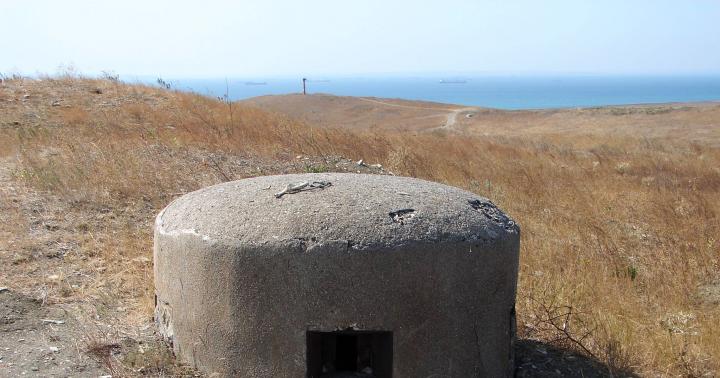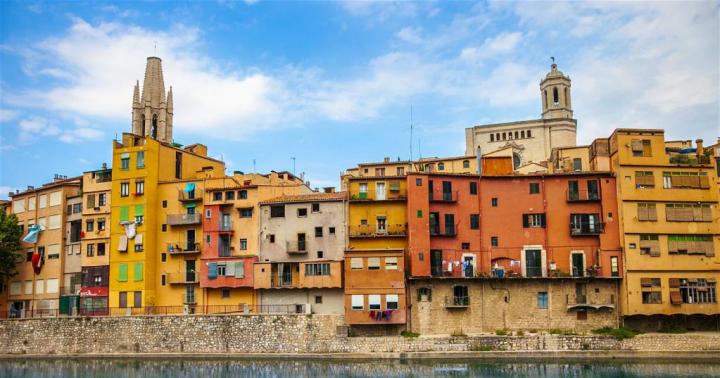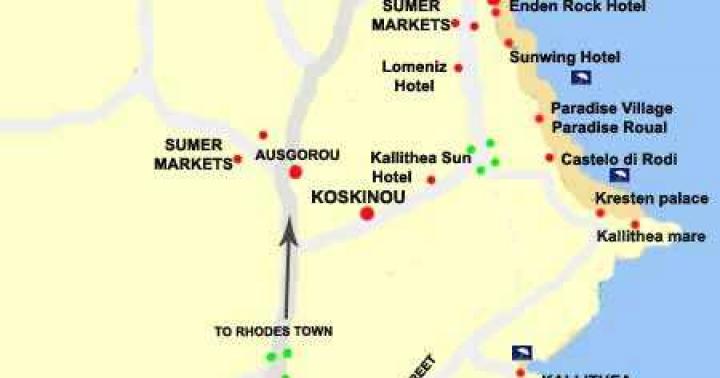What does a bear eat?

Despite the fact that bears are traditionally classified as predators, their diet does not contain as much meat as other animals of this order. Basically, the bear “menu” consists of plant foods. Which of this order of “carnivores” is most predisposed to meat, and does the bear’s diet change depending on the time of year?
The basis of the bearish “menu”
The most skilled hunter of all bear species is the polar bear. There is not much vegetation in the Arctic, so polar bears often hunt seals. All other bears prefer to eat nuts, berries, mushrooms, tubers and acorns. And, of course, they love honey very much. Bears also readily eat various small mammals. However, if the opportunity arises to kill a sheep or a wild boar, the clubfooted ones are unlikely to refuse such a chance.
Bears mainly look for food during the day, and at the same time they feed. In cold regions in the fall, bears actively stock up on fat before hibernation (of course, this does not apply to polar bear). The bear falls asleep for several months, but on a warm day it can wake up and leave the den in search of something edible.
There is a menu for every season
Depending on the time of year, the diet of bears varies. Having awakened from hibernation, in the spring they begin to eat aspen shoots, ants, bird eggs, small animals, and periodically hunt moose.
In mid-summer, bears begin to eat various berries, and in Siberia, pine nuts. IN southern regions they feast on acorns, chestnuts and hazel. If the year turns out to be a lean year and there is no bear’s favorite food in the forest, the animal may go out into fields sown with corn or oats. In some cases, bears also attack domestic animals.
Food - for fat accumulation
As you already understand, bears are omnivorous mammals. And the most important thing for them is to get a large amount of food, which then turns into fat necessary for bear wintering.
Interesting figures: to accumulate fifty kilograms of fat, a bear needs to eat about seven hundred kilograms of berries or five hundred kilograms of nuts.
Bears- predatory mammals, large and dangerous predators. They are found in Russia, Alaska, Western Europe, Finland, Japan, China and Canada. They weigh about 400 kg, are about a meter tall at the withers, with thick hair. Grizzly bears living in Alaska are larger and reach three meters. Males are larger than females. Bears live in forest windbreaks and burnt areas with deciduous vegetation. They can wander into the tundra and alpine forests. What do bears eat?
What do bears eat
Bears eat mostly plant foods: berries, nuts, acorns, chestnuts, roots, tubers and herb stems, honey is especially preferred. The diet of bears includes insects - ants and butterflies, as well as worms, frogs, small rodents - mice, gophers, chipmunks, and large ungulates - fallow deer, deer, roe deer, caribou, and do not disdain carrion.
Bears are excellent fishermen, and in the shallows they catch fish (salmon in Alaska). By winter, bears need to gain as much fat as possible, so they consume food in huge quantities. A well-developed sense of smell helps them find food; their sense of smell is almost like that of dogs; they are even distant relatives of dogs. If there is a poor harvest for berries, bears switch to crops of oats and corn, and also feed in cedar forests. In those years when there is too little food, bears begin to attack livestock and destroy apiaries.
Bears love to eat honey, they find it by smell and climb trees to the bee's nest. They smash it with their paw so that the bees fly away and begin to eat the honey. They are not afraid of bee stings; thick fur and a thick layer of fat save them from pain.
Bears are excellent at climbing trees, swimming well and running fast. Despite their clumsy appearance, they can reach speeds of up to 50 km/h. They have great strength; with one blow of their paw, a bear can break the back of a bison or bison. In winter, bears hibernate, which lasts 5-6 months, and spend it in their den. Now you know what bears eat.
Grizzly bears
On our website you can find out what they eat.
“The bear loves honey very much...” (Winnie the Pooh)
“Mom, what do bears eat?” - children ask, and parents usually answer them that bears eat honey and raspberries. However, these delicacies are not the main food of even brown bears that inhabit Eurasia and North America. But on Earth there are many different types bears, and they live almost everywhere. The bear is a predator, moreover, it is the largest predator among mammals on our planet; he is omnivorous and feeds on plant foods and meat, and all kinds of carrion; and he simply enjoys honey and other sweets. And depending on the inhabitants of the environment surrounding the bear, its diet changes.
Thus, the above-mentioned brown bear (“grizzly”, as the Americans call it), like its North American counterpart the black bear (“baribal”), feeds 75% on berries, nuts, grass, acorns and edible roots. It is he who loves honey, for which he received such a name. In the spring, the bear catches salmon fish in the rivers going to spawn (sitting in shallow water, he paws up and grabs shiny fish carcasses, shimmering blue, like a Blue Fox spinner enlarged several times, and throws them ashore, and then gets out himself and eats them ). In summer, it destroys anthills and other insect habitats, eating them in huge quantities. Sometimes the bear hunts deer, roe deer, even wolves, and feeds on their meat.
The polar bear lives in the Arctic, around the Earth's North Pole. It settles on permanent and drifting ice, and feeds on seals, walruses, fur seals and other local inhabitants. Can also eat seaweed and grass.
Living in South America The spectacled bear eats mainly palm leaves, grass shoots, tubers and edible roots. Like its European counterpart, it loves to destroy termite mounds and feast on sour ants (its muzzle is narrower than that of the brown one, and it is clearly more convenient for it to do this).
The panda, or bamboo bear, a native of China, eats bamboo (hence its name). An adult specimen can eat about 30 kg of bamboo leaves and shoots. They eat this favorite food of theirs: insects, flies, wasps, beetles, bird eggs, small animals that they can catch, as well as fish going to spawn.
Asia Minor and Himalayan bears eat palm leaves, mice and other rodents, and with their long tongues they can extract earthworms and termites directly from their home. They also love honey, but it comes from mountain forests Southeast Asia not so easy to find. And bears, when they want something sweet, learn to chew coconuts and go to banana plantations. 
Knowing the feeding habits of all bears, it is possible to identify common features for all of them: all these bears eat leaves, grass, fish, eggs, meat of caught animals and carrion. Basically, they all eat. And therefore it is most correct to say that the bear is omnivorous.
I remember well the cartoon about Winnie the Pooh and his friends, which I still love and show it to my children. If you've ever watched it, you probably remember that this cute yellow bear spent all his free time trying to stuff as much honey into himself as possible, he really loved it! Cartoons are cartoons, and today I want to tell you about real bears and their diet.
What do bears eat
Even though Winnie the Pooh and Friends is just a children's cartoon, there is a lot of truth in it. Real bears indeed love to eat honey. And, although many people believe that bears are exclusively bloodthirsty predators, this is a little wrong. Most bears love to eat leaves, grass, berries, nectar, fruits, stems, roots of small shrubs and so on. All this makes up about 50 percent of the bear's diet. However, of course, the food of bears is not only plant products. Among animal food, these animals prefer insects, larvae, various rodents, chipmunks, marmots and so on.

I think you know that bears are big lovers enjoy the fish. More often this happens just at the time when they come out of hibernation. Valuable prey for the bear are salmon and trout.
As sad as it may be, bears often become food for deer, roe deer and other artiodactyls who went out to drink clean water by the pond. A hungry bear is capable of many things, for example, attack your cub. If the bear feels that her “husband” is angry and wants to eat, she will try to hide with the little bear in a safe place.


By the way, if you think that bears are ancient creatures, you are mistaken. These animals appeared on our planet only about 3 million years ago.
It's no secret that the Siberian winter is a difficult test for many animals, and bears are no exception.
In common parlance they say that a bear hibernates; biologists say that it goes into winter sleep. There is little detailed information about this interesting process. The main reason is the difficulty of data collection.
The brown bear is found everywhere in the reserve, both in all types of forests and in the mountain-tundra belt. On the territory of the reserve it makes seasonal movements from forests to the high mountain zone and back, often using trails and country roads for migrations.
What does a bear eat before hibernation?
Before going into a den, the owner of the taiga needs to accumulate nutrients. The bear is an omnivore, but most of his diet in Kuznetsk Alatau, as in many other places, consists of food of plant origin: berries, herbaceous plants, acorns, nuts.
Pine cones are one of the favorite delicacies of bears and one of the best fattening foods. Young animals can climb trees behind them and break off branches. But mostly they collect fallen cones from the ground. To get to the nuts, the bear collects the pine cones in a pile and crushes them with its paws, from where, then, lying on the ground, it picks out the nuts along with the shell with its tongue. The shells are partially discarded during the meal and partially eaten.
Often the attention of bears is attracted by the stocks of nuts made by chipmunks. By digging up the animals' burrows, bears get to the nuts and eat them, often together with the owner. They do not miss the opportunity to feast on ant larvae, bird eggs or fish; they also hunt for small rodents and ungulates. A brown bear rarely kills wild ungulates itself; it mainly devours them as carrion or takes the prey of other predators (wolves, lynxes, wolverines).
There are known facts of predators eating such species of wild ungulates as elk, deer, and roe deer. He covers the prey or found carrion with brushwood and stays nearby until he eats the carcass completely. If the animal is not very hungry, it often waits several days until the meat becomes softer.

It is very important how productive the year was for fattening feed. Lean years can greatly delay the time for bears to go to dens, and animals can continue to feed even in twenty-degree frosts and almost half a meter of snow cover, digging out cones from under the snow, trying to gain the fat reserves necessary for wintering. In years favorable for food, adult bears accumulate a layer of subcutaneous fat up to 8-12 cm, and the weight of fat reserves reaches 40% of the total weight of the animal. It is this fat accumulated over the summer and autumn that the bear’s body feeds on in the winter, surviving the harsh winter period with the least deprivation.

Hungry years lead to the appearance of connecting rod bears
These are animals that have not had time to gain sufficient fat reserves, which is why they cannot hibernate. Connecting rods, as a rule, are doomed to death from hunger and frost or from a hunter. But not every bear encountered in the forest in winter will be a crank. During “after-hours” bears appear in the forest, whose sleep in their den is disturbed. A normally well-fed bear, but torn from hibernation, is forced to look for a new, quieter place to sleep. Animal sleep is often interrupted by human disturbance.
Bear's den
Before heading to the den, the bear diligently confuses its tracks: it meanders, walks through windbreaks, and even walks backwards along its own tracks. For dens, they usually choose remote and reliable places. They are often located along the edges of impassable swamps, along the banks of forest lakes and rivers, in windfalls and in logging areas. The brown bear makes its winter home in depressions under uprooted roots or tree trunks, sometimes on a pile of brushwood or near an old woodpile. Less often, it chooses a cave for its home or digs deep earthen holes - soil dens. The main condition is that the home should be dry, quiet and isolated from the presence of unexpected guests. One of the signs of the proximity of a den is large bald spots in the moss, gnawed or broken trees. The animal insulates its shelter with branches and lines the bedding with layers of moss. Sometimes the layer of litter reaches half a meter. It happens that several generations of bears use the same den.

At the beginning of winter, female bears give birth to offspring
From one to four cubs are born, but more often two. Babies are born blind, without fur and teeth. They weigh only half a kilogram and barely reach 25 cm in length. It is interesting that the nipples of female bears are not located along the line of the abdomen, as in most animals, but in the very warm places: in the armpits and inguinal cavities. The cubs feed on 20 percent fat milk from their still sleeping mother and grow quickly. Within a few months of such feeding, the cubs are completely transformed, and they emerge from the den already shaggy and nimble. True, they are still very dependent.

How a bear sleeps in a den
In the den, in warmth and safety, bears sleep throughout the long and cold winter. Often the bear sleeps on its side, curled up in a ball, sometimes on its back, less often it sits with its head lowered between its paws. If an animal is disturbed while sleeping, it easily awakens. Often the bear itself leaves the den during prolonged thaws, returning to it at the slightest cold snap.
Animals hibernating (for example, hedgehogs, chipmunks, etc.) become numb, their body temperature drops sharply, and, although vital activity continues, its signs are almost invisible. In a bear, the body temperature decreases slightly, by only 3-5 degrees and fluctuates between 29 and 34 degrees. The heart beats rhythmically, although slower than usual, and breathing becomes somewhat less frequent. The animal does not urinate or defecate. In this case, any other animal would experience fatal poisoning within a week, but bears begin a unique process for recycling waste products into useful proteins. A dense plug forms in the rectum, which some people call a “plug.” The predator loses it as soon as it leaves the den. The cork consists of tightly compressed dry grass, the fur of the bear itself, ants, pieces of resin and pine needles.
Brown bears They sleep alone, and only females who have young yearlings sleep together with their cubs. The duration of hibernation depends on weather conditions, health and age of the animal. But usually this is the period from the second half of November to the first half of April.

Why does a bear suck its paw?
There is a funny opinion that a bear sucks its paw during hibernation. But in fact, in January, February it happens change of hard skin on the paw pads, while the old skin bursts, flakes, and itches severely, and in order to somehow reduce these unpleasant sensations animal licks its paws.
It took more than one thousand years of natural selection for such a complex system of adaptations to be formed, as a result of which bears acquired the ability to survive in areas with harsh climatic conditions. One can only marvel at the diversity and wisdom of nature.
Previously on the topic Bears:


